Vegas and the Hoover Dam trip Part 3 in Misc. Thoughts opinions, the whole trash can.
- Oct. 19, 2014, 6:58 p.m.
- |
- Public
This is a part of the Dam, besides the structure of the dam itself, that fascinates me as well. The intake towers. These are quite unique, because the too are of an Art Deco design. They stand in the water like little towers or ramparts.
When we visited the dam on previous trips the water was about 30 to 60 feet below the top. The upper parts of the intake towers were about 12 to 20 feet below the top most water intake. The rest was hidden below the water. As of this writing, Lake Mead is at 35 percent of capacity. So we are seeing stuff not previously seen, before the dam was holding back water. The upper coffer dam is still not exposed, and about 50 feet under water. In 1983 there was a huge run off from the Rocky Mountains and you could see the water line or as they call the “bath tub” ring. you can see how far the water line was up. It was about 7 feet from going over the top of the dam. That was a lot of water. Both spillways were running hard for almost 75 days. So if you’re still reading this here are the intakes and the spillways. You will see a view of the spillway on the Nevada side looking into the mouth of the bore.
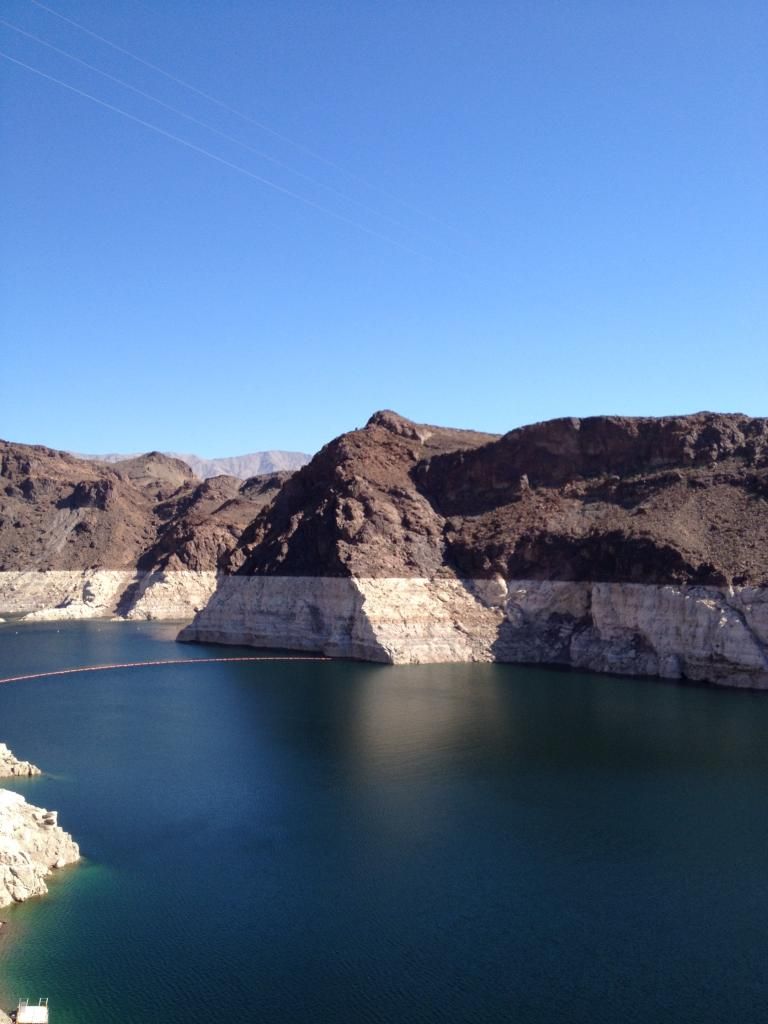
The “bathtub ring. You can see how high the water had gotten. You also can see how low lake Mead is now. The Upper Coffer dam is near and behind the floating barrier line.
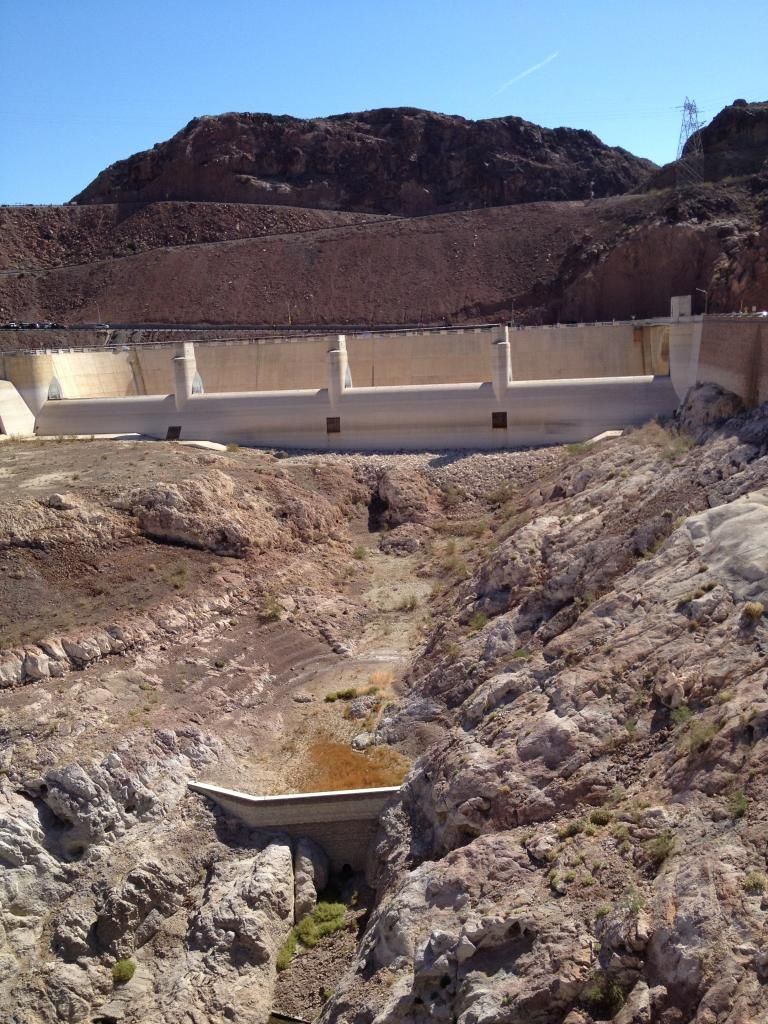
This is the Arizona side spillway. There is usually water in this area and the small outlet drainage structure would be under water.

A second drainage structure even further below the Arizona side spillway.
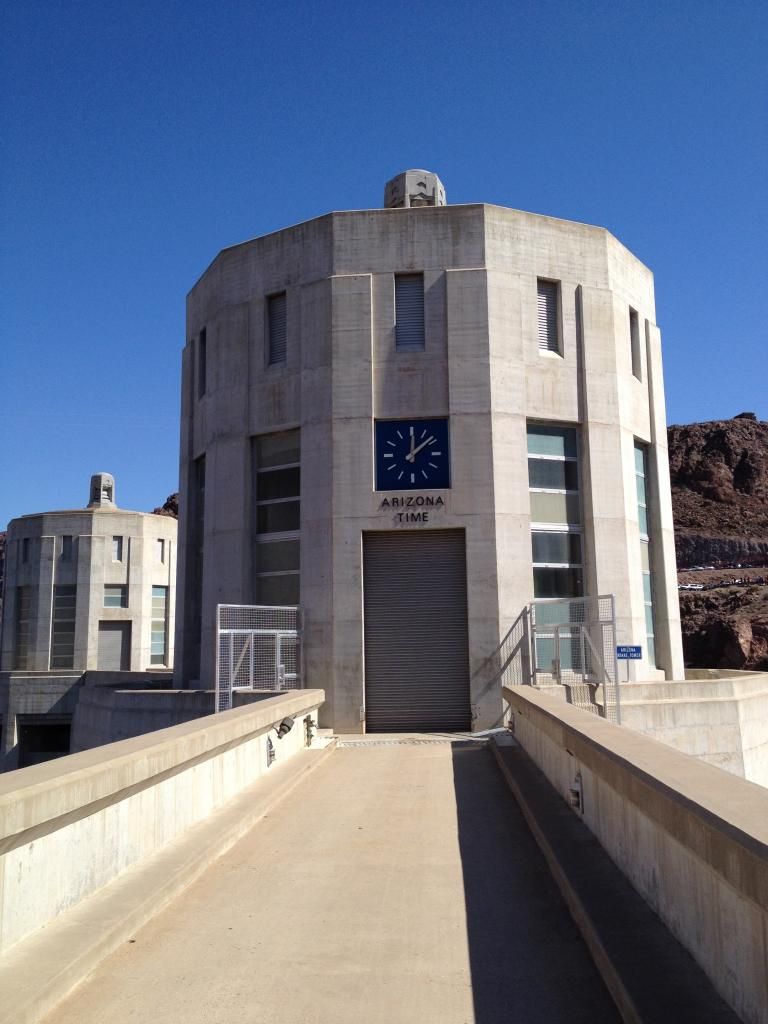
The Arizona side intake towers. Taken from as far as I was able to access on the bridge.
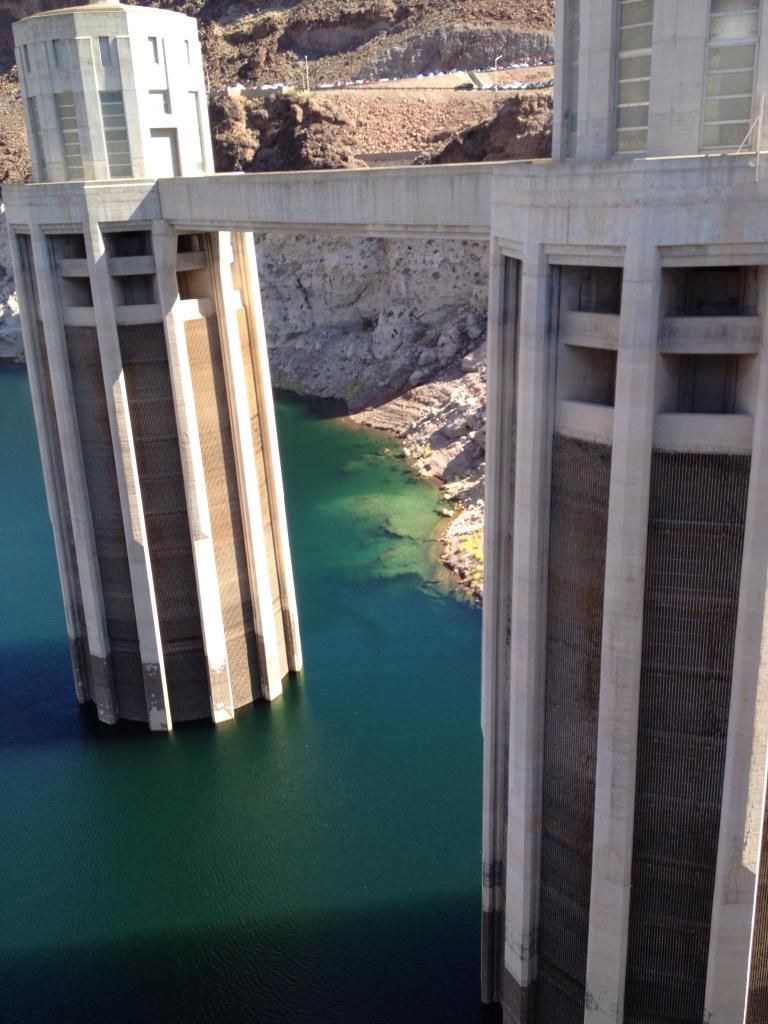
Two shots of the Arizona side intake towers. The bases where they are anchored are still several hundred feet below. The towers are 390 feet tall.
You can see the grated intakes access panels all around the tower structure. The two top most are usually what shows when the lake is at proper level.
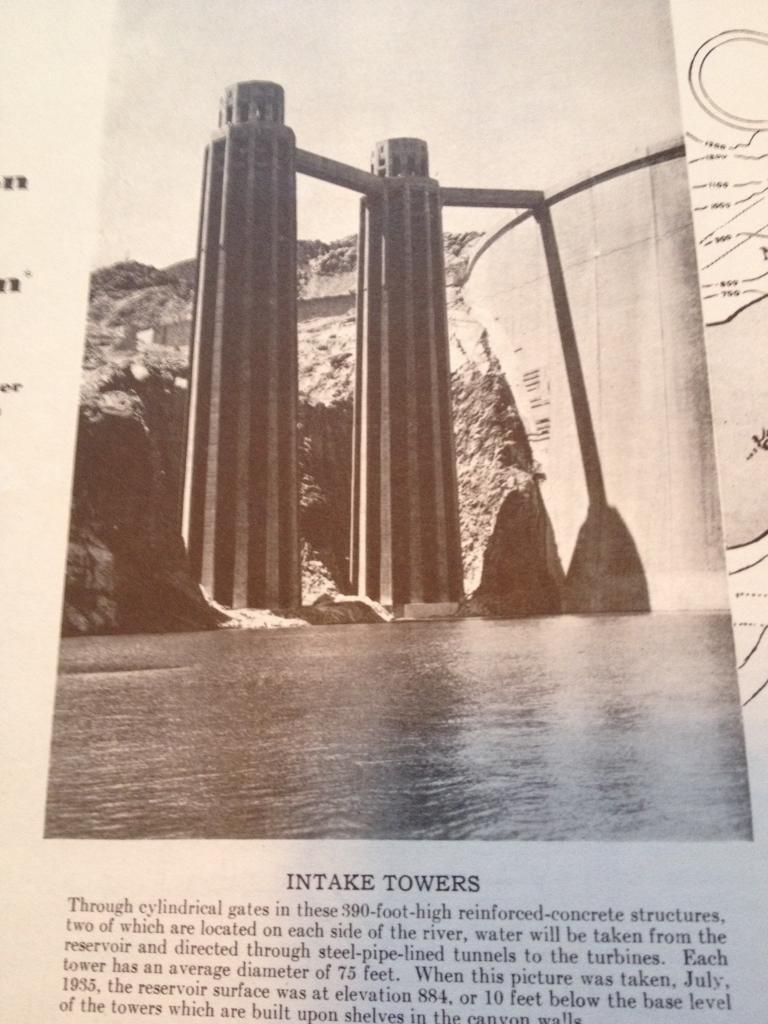
A black an white photo of the towers anchored into the canyon walls. Photo from The Story of the Hoover Dam Nevada Publications.
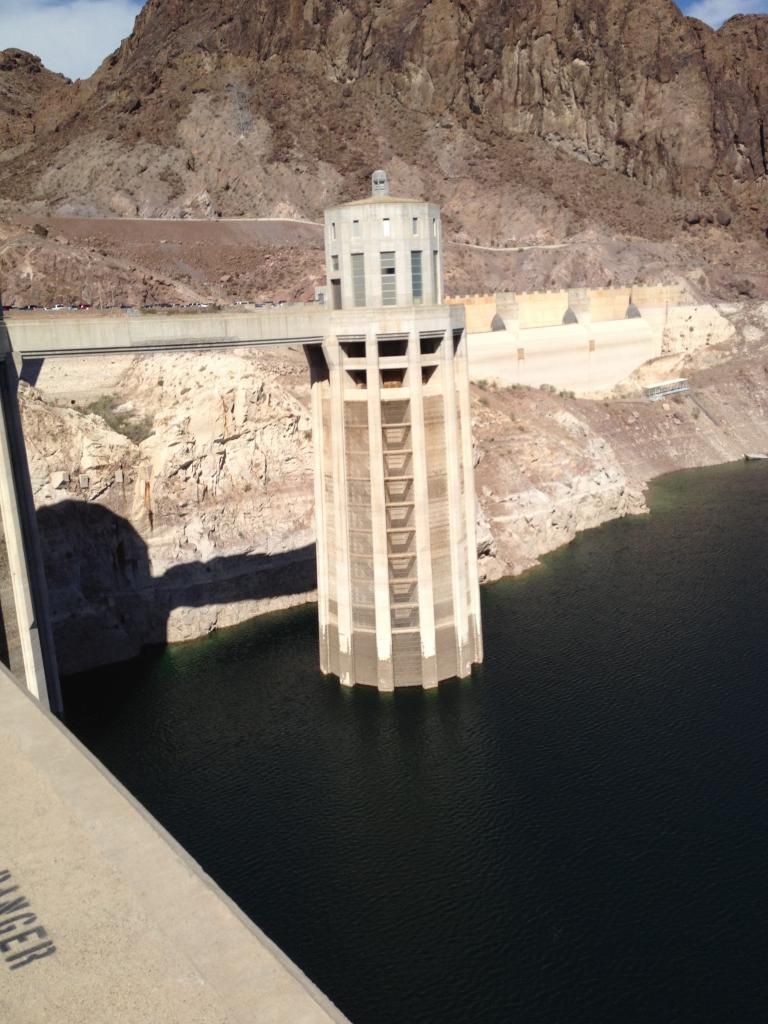
Nevada side number 2 Intake The Nevada side spillway in the back ground.
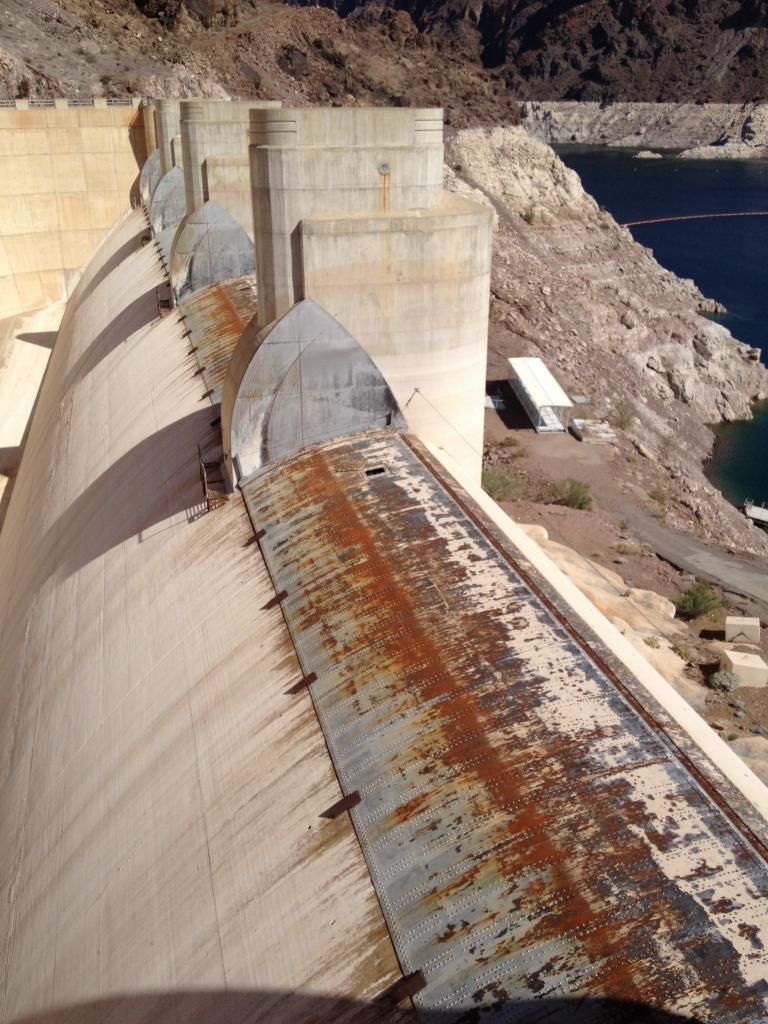
This is the entry way to the Nevada side spillway gates. The rusting steel caps are called drum gates. There are four of these on both spillways.
They are 100 feet long and when extended they are 16 feet tall. these help restrict and control excessive flow. These were brought into play in 1983.
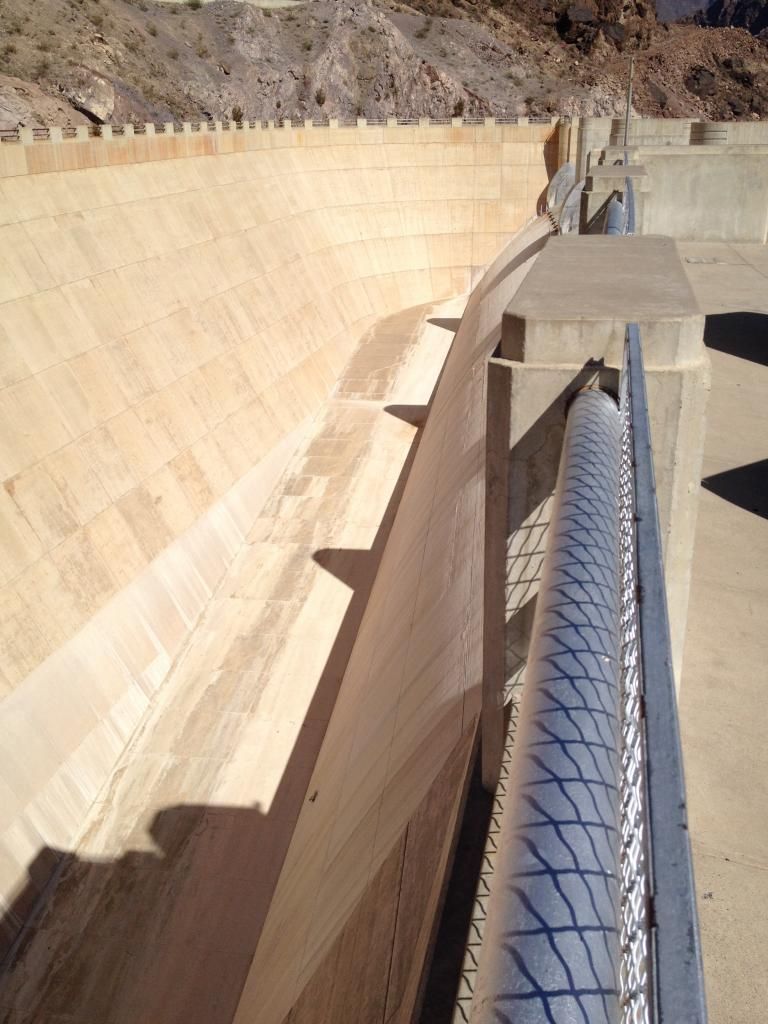
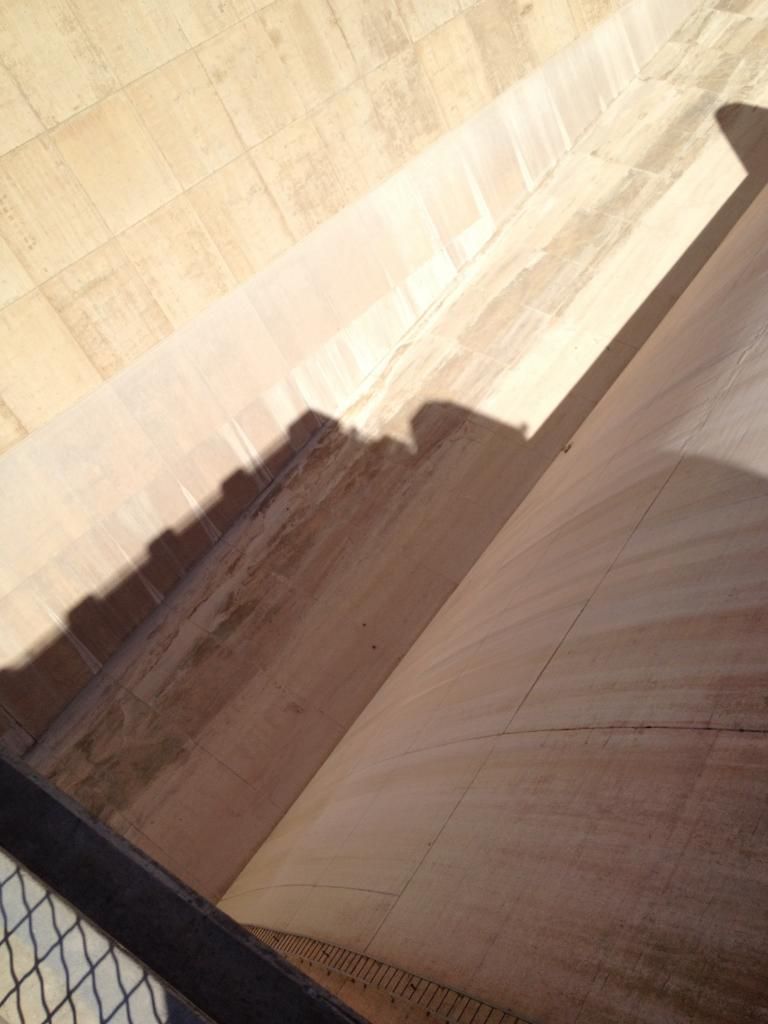
Two shots of the spill way “bowl” and race way, before if goes into the spillway tunnel.

This is the entry into the spillway tunnel on the Nevada side. This is approximately 60 feet above the old diversion tunnel. When the gates were closed this bore, 50 feet in diameter was drilled and muck fell to the diversion tunnel floor and removed. The diversion tunnel was plugged each side with a 400 foot concrete plug. The sound of the water going through Generator penstocks, reverberates through the rock and is amplified by this opening. It is eerie. When these spillways are utilized..it is the equivalent to the flow over Niagara Falls with a 3 times greater drop. The force of energy through these tunnels is 25,000,000 HP.

You can see the tailrace below the dam, where the water exits and rejoins the Colorado River. The two structures on the canyon wall are additional outlets used when the spillway cannot handle the overflow. They have been used twice. You also can see the outlet portals to the spillway outlets. The concrete wall on the righthand side is a barrier for the water extiting the Arizona side spillway, to prevent heavy erosion.
Thanks for reading…
Last updated October 20, 2014


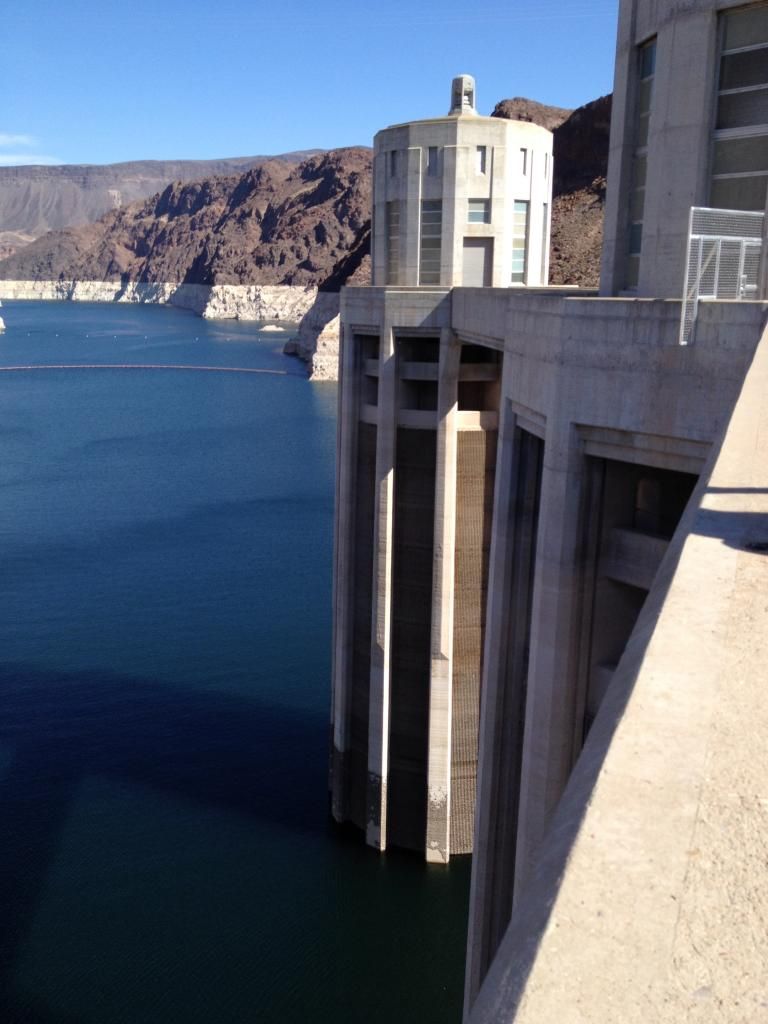

Loading comments...